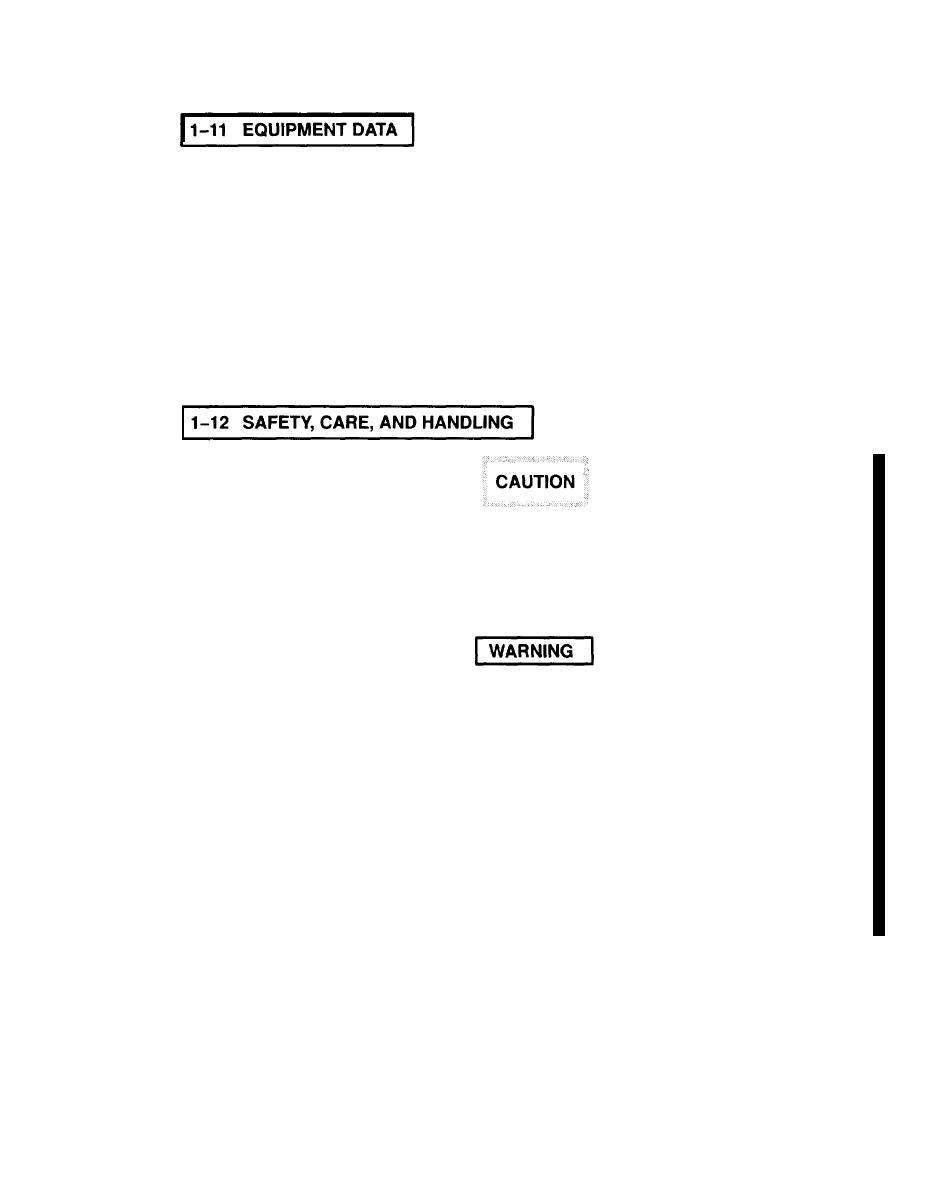
TM 55-2840-254-23
This paragraph lists equipment data which may help you.
Equipment Data
Oil System Capacity . . . . . . . . . . . . . . . . . . .3.75 gallons
l
Electrical Requirements
l
Ignition Exciter Unit . . . . . . . . . . . . . 2.5 amps during starting
Starting Solenoid Valve . . . . . . . . . . . 1.5 amps during starting
Chip Detector . . . . . . . . . . . . . . . . . . . 0.5 amps continuous
Oil Temperature Transmitter . . . . . . . 0.25 amps continuous
Low Oil Level Switch . . . . . . . . . . . 0.5 amps continuous
The inlet housing, starter gearbox housing, compressor housing and anti-king gal-
lery cover are made from magnesium containing small amounts of thorium. Adher-
ence to the following is required.
Health: 0
Flammability: 1
Reactivity: 2
Fire Hazard Class:
The Fourth Diamond: Avoid Use of Water
Grinding or machining magnesium thorium castings will generate dust or chips
which will burn or may explode. The dust or chips are of low level radioactivity.
A. Special precautions must be employed to protect against breathing or eating the dust or metal shav-
ings. Excessive intake of Thorium for a long time can cause lung cancer or bone cancer. Wherever
Mag/Thoroium castings are machined, ground, and welded on, employees should be instructed on basic
radiological health principles. Eating, drinking or smoking is prohibited where ingestion of the dust or met-
al is possible. Good personal hygiene such as thoroughly washing hands and face before going on break
should be followed.
B. Magnesium dust and shavings are extremely flammable. When machining, grinding or welding,
Class D fire extinguishing agents should be readily available for extinguishing metal powder or dust fires.
Water should never be used for extinguishing magnesium fires.
C. The dust and machining wastes are considered low level radioactive wastes and must be disposed of
according to the National Regulatory Commission (NRC) low level radioactive waste disposal regulations,
so they should be collected separately.
Change 10

